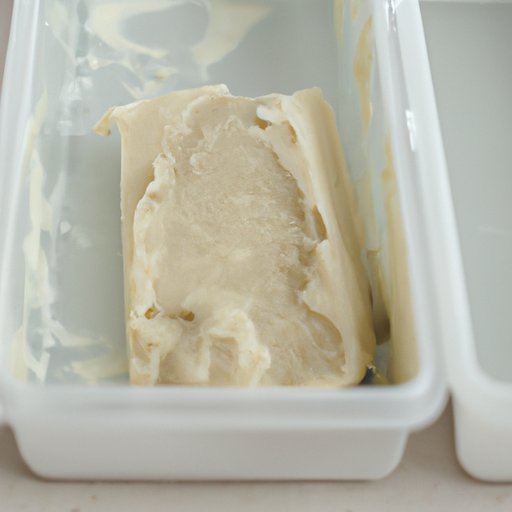
Introduction
Have you ever found yourself with leftover cream that’s about to go bad? Or maybe you’re looking for ways to save money on expensive cream products. Whatever the reason, freezing cream can be a great way to extend its shelf life and reduce food waste.
But can you freeze cream? And if so, how do you do it properly? In this article, we’ll explore these questions and offer tips for keeping your frozen cream fresh and creamy.
The Do’s and Don’ts of Freezing Cream: A Helpful Guide
Before you start freezing cream, it’s important to understand what can and cannot be frozen. Heavy cream and whipped cream both freeze well, while light cream and half-and-half may separate and become grainy in texture. This can be avoided by adding stabilizers, which we’ll discuss in the next section.
It’s also important to choose a suitable container for freezing cream. Avoid using glass containers, which can crack in the freezer, and opt for plastic containers or freezer bags instead. Label each container with the date and type of cream to avoid confusion.
Finally, store your frozen cream in the back of the freezer, where it’s less likely to be exposed to temperature fluctuations.
How to Freeze Cream: Tips to Keep it Fresh and Creamy
To freeze cream, simply pour it into a suitable container or freezer bag, leaving a bit of room for expansion. If you’re freezing whipped cream, pipe it into small dollops on a baking sheet before freezing, then transfer to a container or bag.
If you’re freezing light cream or half-and-half, consider adding a stabilizer like cornstarch or gelatin to prevent separation and maintain a creamy texture. Use 1 tablespoon of stabilizer per cup of cream, whisking it in thoroughly before freezing. Xanthan gum can also be used as a stabilizer, but be sure to follow the manufacturer’s instructions as it can vary by brand.
When it’s time to thaw your frozen cream, place it in the refrigerator overnight. Avoid thawing it in the microwave or at room temperature, which can cause it to separate and become grainy.
Saving Money on Cream: Can You Freeze It and Still Enjoy the Flavor?
One of the biggest benefits of freezing cream is the cost savings. Instead of letting expensive cream products go to waste, you can freeze them for later use. However, it’s important to note that freezing can affect the flavor and texture of cream.
Heavy cream and whipped cream both freeze well and maintain their texture and flavor. Light cream and half-and-half, on the other hand, may lose some of their creaminess and become slightly grainy in texture. Adding stabilizers can help mitigate these negative effects.
When it comes to specific dishes, some may not work as well with frozen cream. For example, frozen cream may not be suitable for recipes that call for a cooked custard or a cream sauce. However, it can be used in many dessert recipes, like ice cream, mousse, and frosting.
Beyond Whipped Cream: Innovative Ways to Utilize Frozen Cream
Frozen cream can be used in a variety of dishes, from sweet to savory. In dessert recipes, it can be used to make ice cream, mousse, frosting, or even cheesecake. In savory recipes, it can be used to make creamy soups, pasta sauces, or gratins.
One innovative way to use frozen cream is to incorporate it into recipes that call for fresh cream. For example, you can make a creamy fettuccine Alfredo by using frozen cream instead of fresh and adding a bit of butter and Parmesan cheese.
The Science Behind Freezing Cream: Why It Works, and How to Do It Properly
The science behind freezing cream is relatively simple. When cream is frozen, the water crystals expand and break down the fat globules, causing them to separate from the liquid. Stabilizers can help prevent this separation and maintain a creamy texture.
Achieving optimal texture and flavor during freezing requires understanding these physical and chemical changes and taking steps to prevent separation and loss of flavor. This includes choosing a suitable container, adding stabilizers if necessary, and using proper thawing techniques.
Conclusion
Freezing cream is a great way to extend its shelf life and save money, but it’s important to do it properly to maintain flavor and texture. Follow our tips for choosing a suitable container, adding stabilizers, and properly thawing frozen cream for optimal results. Plus, explore innovative recipes that call for frozen cream to add a new twist to your cooking.





